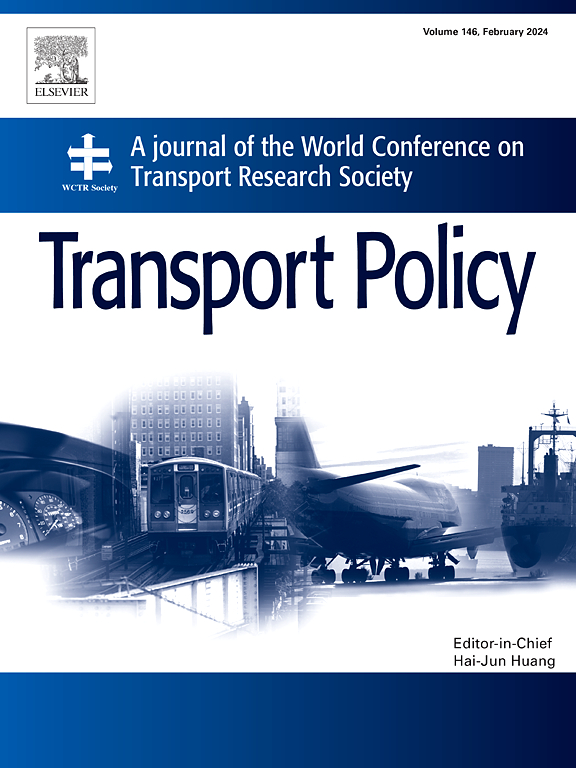Multifunctional development patterns and driving mechanisms of high-speed rail station areas in the Yangtze River Delta, China
IF 6.3
2区 工程技术
Q1 ECONOMICS
引用次数: 0
Abstract
High-speed rail (HSR) stations play an important role in shaping urban spaces and propelling regional development. Amid rapid urbanization and expansion of HSR networks, HSR station areas tend to transition from singular transport nodes into multifunctional urban spaces. Although previous studies have assessed the vitality and development potential of station areas, they tend to overlook the diversity in functional characteristics and the varied factors shaping these areas. This study investigates the evolution and differentiation of 197 HSR station areas in the Yangtze River Delta (YRD), China in 2022, focusing on identifying dominant functional types and their determinants of functional differentiation. Offering a novel approach, this study develops a quantitative framework to classify the dominant functional types within HSR station areas, bridging a gap in the literature that has primarily relied on qualitative classifications. The Random Forest algorithm combined with SHAP (SHapley Additive exPlanations) analysis is employed to reveal the mechanisms that influence each functional type, providing a nuanced understanding of their dynamic characteristics. Results reveal the spatial scope of HSR station areas across various hierarchies and identify four dominant functional types: transportation function-dominant, business function-dominant, residential function-dominant, and comprehensive service function-dominant station areas. Each type exhibits distinct economic and geographic characteristics, reflecting specific urban development needs and growth patterns shaped by different factors. Based on these findings, this study proposes policy recommendations aimed at optimizing station area functions, thereby supporting the high-quality development of urban spaces induced by HSR development.
长三角高铁站区多功能发展模式及驱动机制
高铁车站在塑造城市空间和推动区域发展方面发挥着重要作用。在快速城市化和高铁网络扩张的背景下,高铁站点区域正从单一的交通节点向多功能的城市空间过渡。虽然以往的研究对车站区域的活力和发展潜力进行了评估,但往往忽视了车站区域功能特征的多样性和形成这些区域的各种因素。本文对长三角197个高铁站区2022年的演变与分化进行了研究,重点分析了其优势功能类型及其功能分化的决定因素。本研究提供了一种新颖的方法,开发了一个定量框架来对高铁站点区域内的主要功能类型进行分类,弥补了文献中主要依赖定性分类的空白。随机森林算法结合SHAP (SHapley加性解释)分析被用来揭示影响每种功能类型的机制,提供对其动态特征的细微理解。结果揭示了高铁站点区域在不同层次上的空间范围,并确定了以交通功能为主导、以商业功能为主导、以居住功能为主导和以综合服务功能为主导的站点区域四种主导功能类型。每种类型都具有独特的经济和地理特征,反映了由不同因素形成的特定城市发展需求和增长模式。在此基础上,本研究提出了旨在优化站区功能的政策建议,从而支持高铁发展引发的城市空间高质量发展。
本文章由计算机程序翻译,如有差异,请以英文原文为准。
求助全文
约1分钟内获得全文
求助全文
来源期刊

Transport Policy
Multiple-
CiteScore
12.10
自引率
10.30%
发文量
282
期刊介绍:
Transport Policy is an international journal aimed at bridging the gap between theory and practice in transport. Its subject areas reflect the concerns of policymakers in government, industry, voluntary organisations and the public at large, providing independent, original and rigorous analysis to understand how policy decisions have been taken, monitor their effects, and suggest how they may be improved. The journal treats the transport sector comprehensively, and in the context of other sectors including energy, housing, industry and planning. All modes are covered: land, sea and air; road and rail; public and private; motorised and non-motorised; passenger and freight.
 求助内容:
求助内容: 应助结果提醒方式:
应助结果提醒方式:


